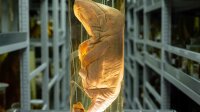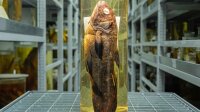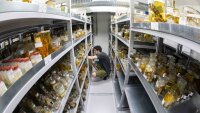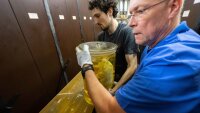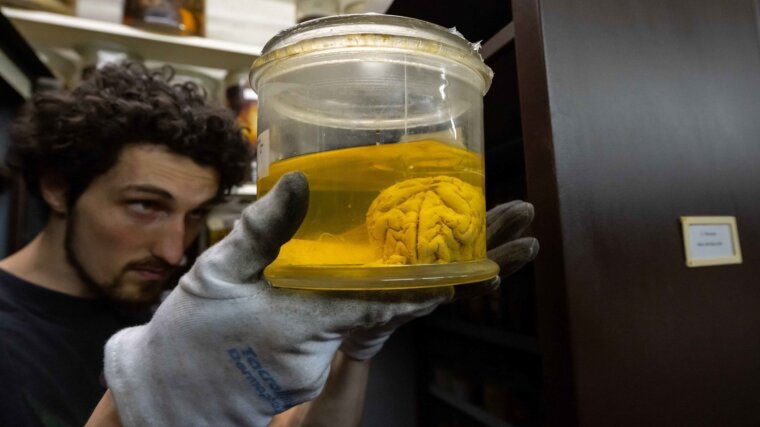
By Axel Burchardt
Alcohol can be a very important tool in science—the Phyletic Museum’s wet collection wouldn’t exist without it. Since 1850, around 40,000 animals have been kept in an alcohol solution in around 10,000 glass containers to preserve them for science. Around one third of the animals are kept in formalin. Unlike in exhibition collections, the exhibits in the wet collections are not processed before being preserved. They are not intended for public display, but for scientific use. On the one hand, the animals collected and dated exclusively by experts around the world can be used to identify evolution in species and populations—for example, a bird caught in the present day can be compared with its ancestor if it comes from the same location. On the other hand, the wet collection enables research to be carried out on historical specimens using state-of-the-art technology, which provides answers to questions that haven’t even come up in science before. As the preserved animals still contain all their information, they can be examined using new methods in genetics, imaging and other fields.
Unlike in the museum’s insect collection, for example, where the exhibits are dried and their organs are not preserved (and valuable information is therefore lost), the animals in the wet collection have all their organs and genes intact. As a result, gene analysis and other methods can be used to identify relationships over the centuries. The wet collection forms a glass database with selected historical exhibits for current and future research—even if the exhibits have only just started to be digitalized.
And in keeping with a database, the wet collection needed an »update« in 2021. The exhibits had to be moved from the Phyletic Museum to a more suitable location to allow researchers to work as safely and effectively as possible. The animals are now being kept in optimal conditions and the researchers have more space for their investigations. After around four years of planning, it took less than four weeks to settle the glass database in its new home in summer 2021.
The relocation didn’t cause any damage, but it did generate lots of new knowledge, as the experts already started noticing a few things during their preparation that were not previously included in the long lists of data on the exhibits—research projects for future generations. However, there was one thing the taxidermists had to do after the relocation: top up the alcohol level in some of the glasses.
- Show first page
- Previous page
- Page 1 of
- Next page
- Show last page
